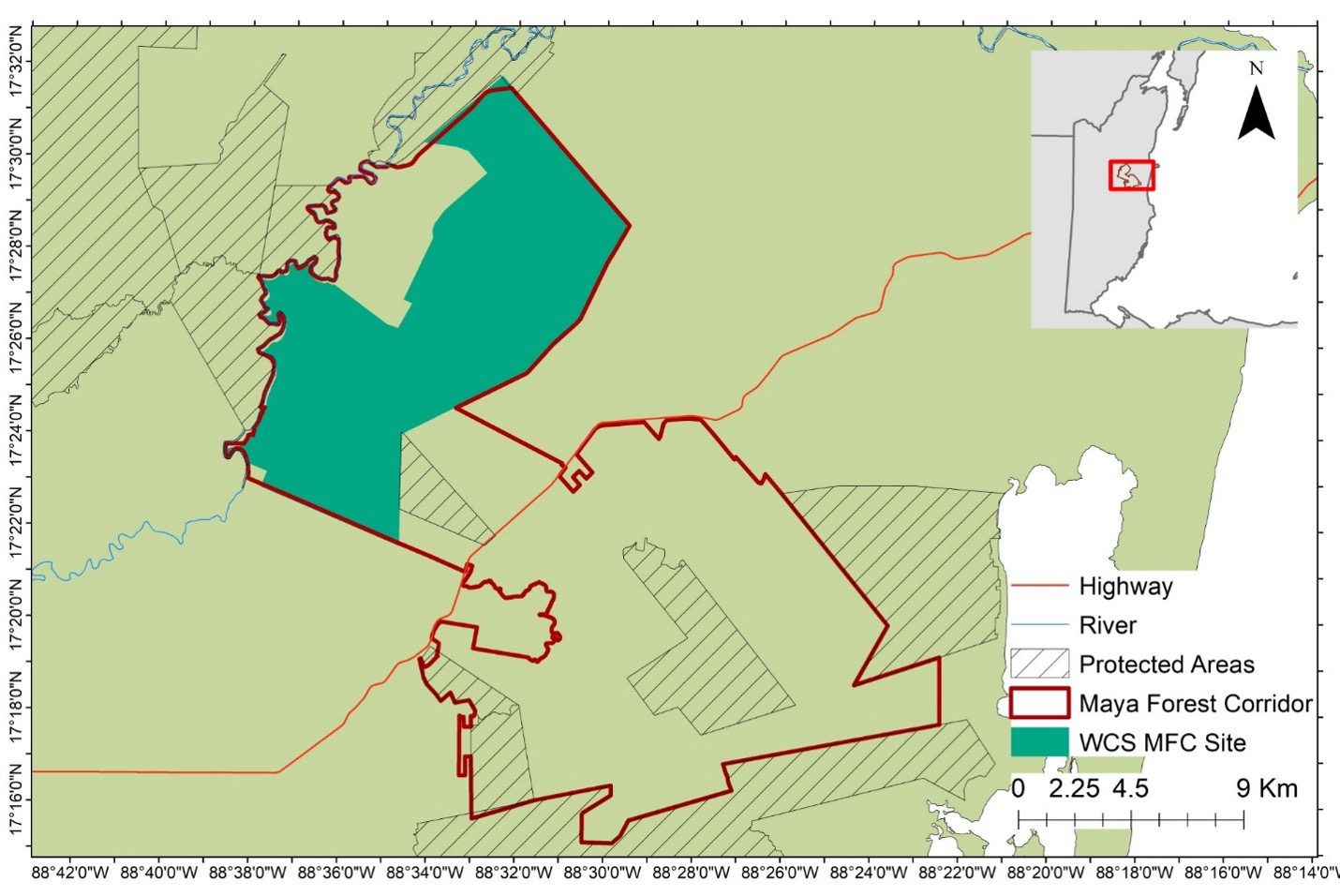The Maya Forest Corridor (MFC) landscape is a mosaic of secondary forest, private and public protected areas, small farms, large-scale agriculture, pastures, forest fragments, and riverine habitat in central Belize. It is integral in connecting Belize's forests to the rest of the tri-national Selva Maya; within Belize, the MFC connects the forests of northern Belize to the southern Maya Mountain Massif. In 2005, the Belizean government recognized the MFC as a critical biological corridor through the National Protected Areas System Plan.
A series of initiatives conducted by a coalition of Non-Governmental Organizations, Communities, and Government has highlighted the need to safeguard this vital linkage among the Belizean forest. The University of Belize Environmental Research Institute led the first Maya Forest Corridor Conservation Action Plan in 2014, identifying the significant threats faced in the corridor landscape and mitigation measures. Subsequently, MFC Coalition increased its collaborative efforts and implemented several corridor-focused projects, such as biodiversity monitoring and fire management.
In 2021, the Maya Forest Corridor Trust (MFCT), composed of WCS Belize, Foundation for Wildlife Conservation, Belize Maya Forest Trust, and ReWILD, attained a ~30000-acre property as a step forward to safeguard the connectivity of the protected area system in Belize and entrusted it to the people of Belize.
The property was purchased with the intention that it would become a REDD (Reducing Emissions from Deforestation and Forest Degradation) project registered in the Verified Carbon Standard (VCS) and the Climate, Community, and Biodiversity Standard (CCB) run by Verra. Prior to the purchase of the property by the MFCT, the property was under tangible threat of legal conversion from forest to agriculture. More information about the Maya Forest Corridor REDD project can be found in the links below.
Subsequently, the MFCT has secured other lands that WCS and the Belize Zoo manage. MFCT properties are a crucial forest fragment that ensures the MFC maintains its connectivity functions for the wildlife species.
In February 2022, WCS started the ground management of the property on behalf of the MFCT. WCS's management role includes forest protection, research, wildland fire management, community outreach, and promoting sustainable livelihoods within the buffering communities. Twenty-one communities buffering benefit and use the MFC for hunting grounds, pollination, and flood control. Working with these communities is very important. Hence, WCS is working with communities continuously by increasing their capacity and knowledge of the importance of the MFC and the biodiversity in the landscape. In 2024, WCS signed the first Community Conservation Agreement in the MFC with Mahogany Heights. WCS also works closely with the Community Baboon Sanctuary Women Conservation Group to foster climate-smart agriculture within the Belize River Valley communities. By strengthening the links between protected areas and communities, supporting integrated planning, and increasing capacity among local organizations, we will secure the integrity and ecological sustainability of the MFC landscape.

The Maya Forest Corridor Fire Working Group was established through this collaborative conservation approach. The group aims to enhance the capacity of the on-the-ground managers and communities within and around the corridor. Additionally, the MFCFWG is promoting proper fire management in central Belize and working closely with the Belize Forest Department to increase awareness about the importance of fire management across the country.
Links to more information about the Maya Forest Corridor REDD project
Verra registry project page – The 30-day public comment period about the project is expected to take place in November. During this period, public comments can be submitted in the link. More information on the specific dates of the public comment period will be provided pending updates from Verra. After the public comment period ends, comments can still be submitted directly to secretariat@verra.org